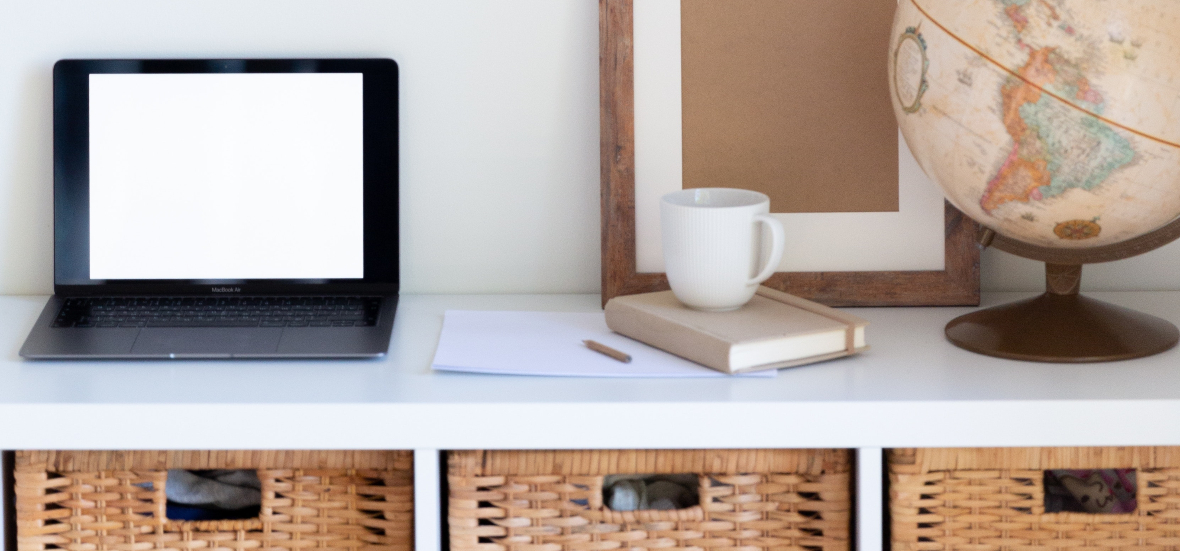
Lisa Hess considers how process and purpose come together to solve organizing problems.
Piles. Closets so overstuffed the doors won't close. That mysterious smell coming from the back of the Mom-mobile. These things can't help but attract our attention -- in fact, they practically scream for it -- moving them to the top of our organizing to-do lists.
But what about the quieter spots? The cram-and-jam drawer that contains a little bit of everything, making it difficult to find anything? The stack of items to deal with later that got neatly tucked into a basket or bag, then tossed into a closet, leaving it out of sight and therefore out of mind? The surface that seems to be magnetized, judging by the number of homeless items that have taken up residence there on a semi-permanent basis?
If the squeaky wheel gets the grease (no more clichés, I promise), these spots are doomed to a life of inattention -- or at least a very long respite.
Whipping the counter in my office into shape made me more aware of these surfaces and spaces. The semi-empty file sorter on top of my desk. The top of the dresser in our bedroom. The top of the shoe organizer in my closet that began as a sort of vanity tabletop, but ended up a catchall for small, homeless items that kinda sorta belonged there.
What's going on here?
The build-up was gradual. None of these spaces ever had a pile dumped into or on top of them. Instead, each one started as a clear space that slowly morphed into a holding zone for a variety of homeless items, usually one at a time, that were supposed to be there temporarily until slowly, but surely, each of these clear spaces stopped being clear and became a catch-all space. It happened gradually and stayed just under the radar until it reached the tipping point.
But that third spot -- the one inside my closet -- was the sneakiest one. As with decorative baskets and junk drawers and yes, the file sorter on my desk, the stuff was hidden away. Those spots didn't call out to me like the counter in my office or the top of my dresser. They just quietly collected stuff.
And dust.
While part of the problem here is my I need to see it personal style, drawn automatically to spots that are visible, there's also something deeper at work.
None of those spots was assigned a definite purpose. That set them up perfectly to catch the overflow until they, too, overflowed. Until they reached that tipping point (or my consciousness was raised, thanks to my counter), they were easy enough to ignore.
When we notice that things that are out of place, we become motivated to put them back -- maybe not immediately, but eventually. But, when something is out of place for too long, it begins to claim that space as its own and we no longer notice that it's not where it belongs (or that it needs a home). And, if a place isn't assigned a purpose -- this shelf holds books, this cabinet holds pots and pans, this basket holds toiletries -- it becomes a magnet for things that aren't assigned a home.
When it comes to organization, some of our spaces call out to us. The ones we have to keep an eye on, however, are the ones that serve as quiet collectors. Those are the spots in search of a purpose and, the sooner we assign them one, the sooner they’ll be organized, and the sooner those pile-ups will be disassembled and put where they belong.
The top of my shoe shelf is now empty, save for a lamp. The surface has been dusted and cleaned, and is ready for its assignment. Right now, the items that were on that shelf are neatly lined up on another surface, awaiting their assignments, and I’m practicing some think time so the purpose of the shelf makes sense for the long haul, and so do the homes for all the items.
It’s a process.
Copyright 2020 Lisa Hess
Image: Tatiana Syrikova (2020), Pexels
About the Author

Lisa Hess
Transplanted Jersey girl Lisa Lawmaster Hess is the author of a blog compilation, three novels, and three non-fiction books, including the award-winning Know Thyself: The Imperfectionist’s Guide to Sorting Your Stuff. A retired elementary school counselor, Lisa is an adjunct professor of psychology at York College of Pennsylvania. She blogs at The Porch Swing Chronicles, Organizing by STYLE, and here at Catholicmom.com. Read all articles by Lisa Hess.


.png?width=1806&height=731&name=CatholicMom_hcfm_logo1_pos_871c_2728c%20(002).png)
Comments